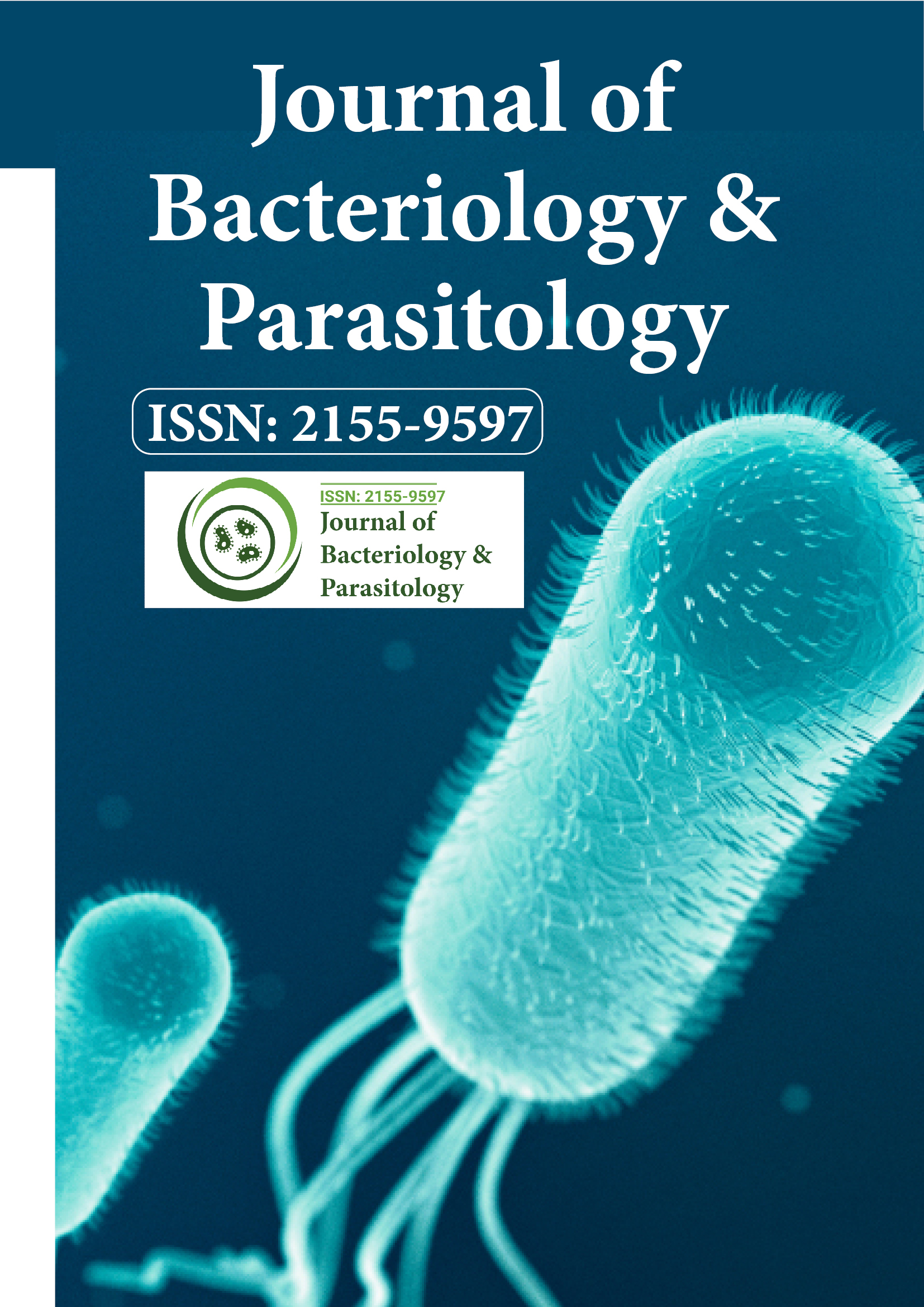Indexed In
- Open J Gate
- Genamics JournalSeek
- Academic Keys
- JournalTOCs
- ResearchBible
- Ulrich's Periodicals Directory
- Access to Global Online Research in Agriculture (AGORA)
- Electronic Journals Library
- RefSeek
- Hamdard University
- EBSCO A-Z
- OCLC- WorldCat
- SWB online catalog
- Virtual Library of Biology (vifabio)
- Publons
- MIAR
- Geneva Foundation for Medical Education and Research
- Euro Pub
- Google Scholar
Useful Links
Share This Page
Journal Flyer

Open Access Journals
- Agri and Aquaculture
- Biochemistry
- Bioinformatics & Systems Biology
- Business & Management
- Chemistry
- Clinical Sciences
- Engineering
- Food & Nutrition
- General Science
- Genetics & Molecular Biology
- Immunology & Microbiology
- Medical Sciences
- Neuroscience & Psychology
- Nursing & Health Care
- Pharmaceutical Sciences
Opinion Article - (2024) Volume 15, Issue 3
Innovative Strategies and Technologies in Combatting Parasitic Infections
Joanna Marcelo*Received: 27-Aug-2024, Manuscript No. JBP-24-27256; Editor assigned: 30-Aug-2024, Pre QC No. JBP-24-27256 (PQ); Reviewed: 13-Sep-2024, QC No. JBP-24-27256; Revised: 20-Sep-2024, Manuscript No. JBP-24-27256 (R); Published: 27-Sep-2024, DOI: 10.35248/2155-9597.24.15.519
Description
Parasites are organisms that live on or within a host, deriving nourishment at the host's expense. They pose significant threats to human health, agriculture and animal husbandry, resulting in millions of deaths and substantial economic losses annually. Traditional antiparasitic treatments have been effective to varying degrees, but the emergence of resistance and side effects has necessitated innovative approaches. Recent advancements in science and technology offer new pathways for targeting parasites more effectively, notably through novel antiparasitics and the application of nanotechnology.
The challenge of antiparasitic resistance
The development of resistance to antiparasitic drugs is a pressing concern. For instance, Plasmodium falciparum, the parasite responsible for the most severe form of malaria, has shown increasing resistance to widely used medications like chloroquine and artemisinin. Similarly, gastrointestinal parasites such as Giardia and various helminthes have developed resistance to standard treatments. This growing resistance is exacerbated by factors such as inadequate treatment regimens, improper drug usage and environmental changes. As a result, there is an urgent need for novel antiparasitic compounds and alternative therapeutic strategies.
New antiparasitic drugs
In response to the challenge of resistance, researchers are exploring innovative chemical compounds and drug discovery approaches. High-throughput screening techniques have become pivotal in identifying potential antiparasitic agents from libraries of existing drugs. This method allows for rapid testing of thousands of compounds, significantly speeding up the discovery process.
One innovative avenue is the repurposing of existing drugs that were originally designed for other medical applications. For instance, the use of the antibiotic doxycycline has shown effectiveness against several parasitic infections, including those caused by the Wolbachia bacteria in filarial parasites. This strategy not only saves time and resources but also leverages previously established safety profiles of existing medications.
Another innovative approach involves targeting specific metabolic pathways unique to parasites. For example, researchers have identified essential enzymes in the glycolytic pathways of certain parasites that are absent in humans. Inhibiting these enzymes can effectively kill the parasite without harming the host. Compounds designed to target these pathways are currently under investigation, with contract results.
Vaccine development
In addition to new drugs, vaccine development is gaining traction as a means to combat parasitic infections. Traditional vaccine approaches have been challenging due to the complex life cycles and antigenic diversity of many parasites. However, advances in molecular biology and immunology have led to the identification of potential vaccine candidates that can elicit strong immune responses.
For example, the use of recombinant proteins and peptide-based vaccines is being explored. These vaccines can be engineered to present specific antigens to the immune system, stimulating a targeted response against the parasite. Additionally, advances in adjuvant technology have improved the efficacy of these vaccines, making them more effective in promoting long-lasting immunity.
Nanotechnology in antiparasitic treatment
Nanotechnology represents a revolutionary approach in the fight against parasitic infections. By manipulating materials at the nanoscale, researchers can develop targeted delivery systems that improve drug efficacy and reduce side effects. Nanoparticles can be designed to encapsulate antiparasitic drugs, enhancing their solubility and bioavailability.
One significant advantage of nanotechnology is its ability to facilitate targeted drug delivery. For instance, nanoparticles can be engineered to recognize and bind to specific receptors on the surface of parasitic cells, ensuring that the drug is delivered directly to the site of infection. This targeted approach minimizes damage to surrounding healthy tissues and enhances the therapeutic effect of the drug.
Moreover, nanotechnology can be used to create diagnostic tools that enable the express uncovering of parasitic infections. Nanoparticles can be functionalized with specific antibodies or peptides that bind to parasite antigens, providing a quick and sensitive method for diagnosis. This early detection can lead to timely treatment and reduce the transmission of parasitic diseases.
Citation: Marcelo J (2024). Innovative Strategies and Technologies in Combatting Parasitic Infections. J Bacteriol Parasitol. 15:519.
Copyright: © 2024 Marcelo J. This is an open-access article distributed under the terms of the Creative Commons Attribution License, which permits unrestricted use, distribution, and reproduction in any medium, provided the original author and source are credited.

